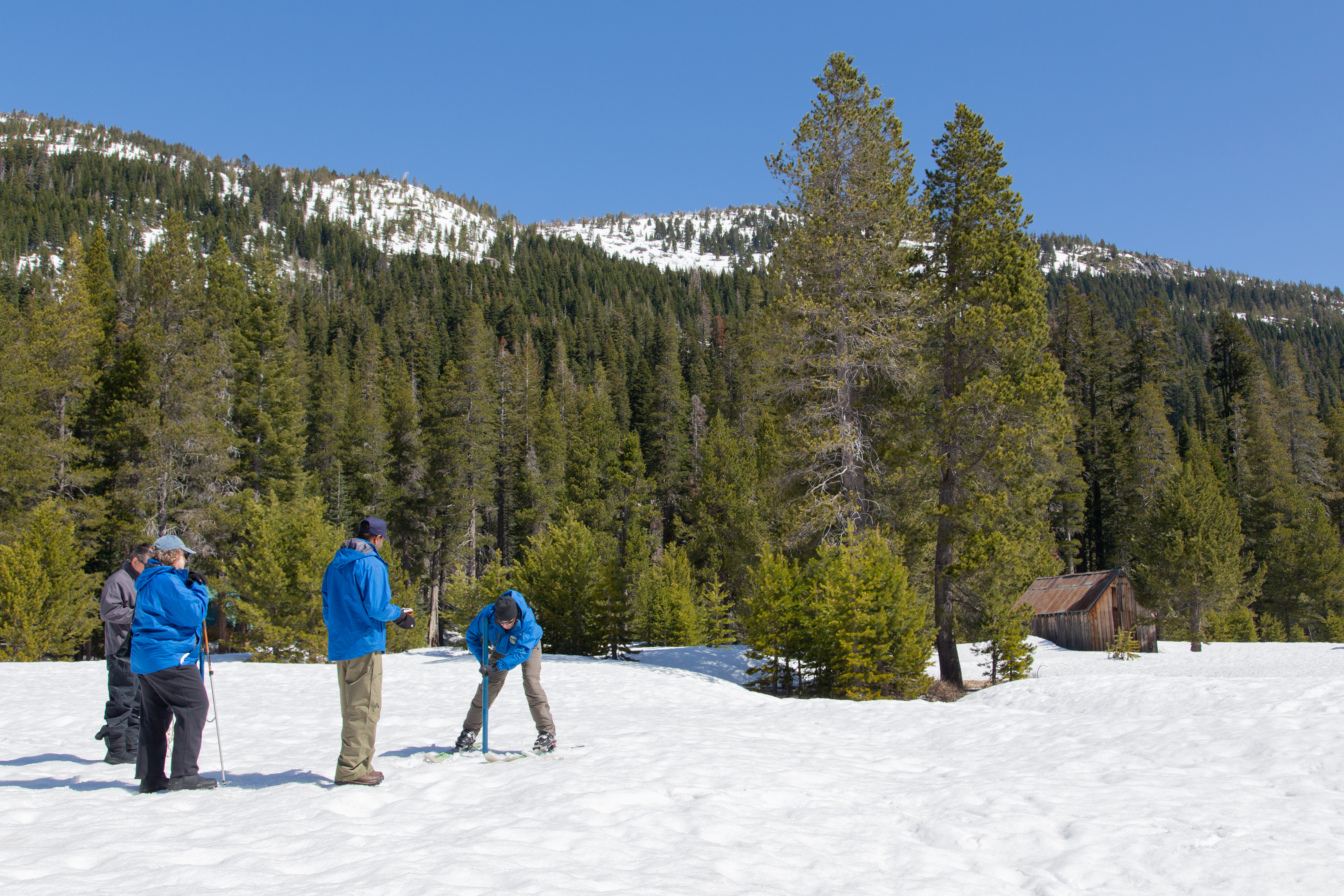DWR staff conduct the May 2019 snow survey at Phillips Station in the Sierra Nevada mountains. DWR/2019
SACRAMENTO, Calif. – The Department of Water Resources (DWR) today conducted the fifth and final Phillips Station snow survey of 2019. The manual survey recorded 47 inches of snow depth and a snow water equivalent (SWE) of 27.5 inches, which is 188 percent of average for this location.
Statewide, California’s snowpack sits at 31 inches of SWE, which is 144 percent of average for this time of year. Snow water equivalent is the depth of water that theoretically would result if the entire snowpack melted instantaneously.
Today's readings will help hydrologists forecast spring and summer snowmelt runoff into rivers and reservoirs. The melting snow supplies approximately one-third of the water used by Californians.
"California’s cities and farms can expect ample water supplies this summer,” said DWR Director Karla Nemeth. “But it’s critical that it’s put to use replenishing groundwater basins and storage reservoirs for the next inevitable drought. Every resident and business can also help California by using water as efficiently as possible.”
The snowpack’s water content is the most important factor for water managers and hydrologists to measure because it is tied directly to water supply. Water content, however, varies from year to year depending on the air temperature and intensity and amount of precipitation. After a storm, the snow settles, compacts, and gets increasingly dense. As more snow falls, the snow beneath it will further compact. April 1 is typically the height of the year’s snow water content. However, it is not until late spring and early summer when the intense sunshine becomes the key factor in snow melt and run-off.
“2019 has been an extremely good year in terms of snowpack,” said Jon Ericson, DWR Chief of the Division of Flood Management. “Based on our surveys, we are seeing a very dense, cold snowpack that will continue to produce run-off into late summer.”
The 2019 snowpack reached its peak on March 31 and is the fifth largest on record, based on more than 250 manual snow surveys conducted each month by the California Cooperative Snow Survey Program.
Both rain and snowpack runoff feed California’s reservoirs. The state’s largest six reservoirs currently hold between 96 percent (San Luis) and 128 percent (Melones) of their historical averages for this date. Lake Shasta, California’s largest surface reservoir, is 108 percent of its historical average and sits at 93 percent of capacity.
DWR conducts up to five snow surveys each winter – near the first of January, February, March, April and, if necessary, May – at Phillips Station in the Sierra Nevada just off Highway 50 near Sierra-at-Tahoe. The Phillips snow course is one of hundreds that is surveyed manually throughout the winter. Manual measurements augment the electronic readings from about 100 snow pillows in the Sierra Nevada that provide a current snapshot of the water content in the snowpack.
Additional Resources
Video of today’s Phillips survey (Expected between 2-3 p.m.)
Digital photos of today’s Phillips survey (Expected between 2-3 p.m.)
Snowpack readings (View readings for current regional snowpack and historical snowpack comparison)
CDEC precipitation data (View current charts for the Northern Sierra 8-station index for updated rainfall readings in the critical northern portion of the state, as well as the San Joaquin 5-station index and Tulare Basin 6-station index.)
###
For more information, follow us on Twitter or Facebook and read our news releases and DWR updates.
Contact:
Chris Orrock, Information Officer, Public Affairs, Department of Water Resources
916-651-7012 | Chris.Orrock@water.ca.gov
